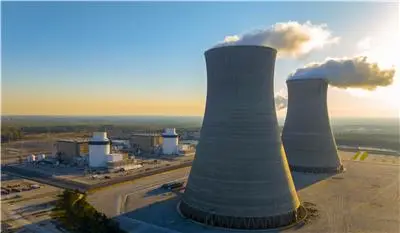What we’ve learned from years of hard work is that there are five things that must be true for anyone the Department of War, potential customers, or investors to be able to quickly separate a demonstration test by a mature reactor program from a science project. A test must use commercially-relevant fuel. Many prototypes use fuel that’s convenient for a laboratory, not for deployment. To be meaningful, a test must use fuel with the correct enrichment level and prototypic form factor while also linking fuel cost and supply directly to what the end user can expect in production. Anything else risks building an uneconomic or unscalable design. A test must be at least 90% of commercial capacity. If your test doesn’t have a plan to achieve at least 90% of the power level your first customer requires, you aren’t really proving your system. Scaling up later often introduces new physics and thermal challenges that render early data meaningless. A credible demonstration tests the actual system under realistic power conditions. A test must operate at full power for 150 hours or more. Achieving zero-power critical confirms that the reactor’s reactivity mechanisms, sensors, and control systems perform as designed. It’s the point where modeling meets reality, where engineers prove the physics actually work in hardware. Then, once you’re there, you need to be able to operate at full temperature and full power for at least 150 hours (or at least 1/200th of the product’s lifetime) to demonstrate reliability and endurance. A short, partial-power test might show that something turns on, but a sustained run proves that it can also keep working safely and consistently. A test must demonstrate all safety features. This should be table stakes. The nuclear industry is not just in a tech race; it’s also in a trust race. Every safety mechanism, passive and active, must be verified through data, not just simulation. A company that treats this step lightly is one you should not trust to work with nuclear fuel. You must have capital five to 10 times a commercial reactor’s cost to test (and even more to scale it). Building a test reactor is enormously expensive. For starters, any player in this space needs to be able to produce a detailed bill of materials with actual supplier quotes for all items to show that you understand how much a reactor is going to cost a customer. And that’s just for the test reactor. The next step, production, requires access to capital at a factor in scale. At Radiant, we’ve spent years working to ensure we’ve answered these and many other questions as we prepare to operate our Kaleidos Demonstration Unit at the Idaho National Laboratory’s Demonstration of Microreactor Experiments facility next year. Kaleidos is a full-scale, fully fueled test reactor, designed from the start for mass production, transportability, and compliance with both DOE and Nuclear Regulatory Commission frameworks. THE DAWN OF THE TRUMP NUCLEAR RENAISSANCE Janus represents an important moment for advanced nuclear: a chance to bring defense and industry closer together in rethinking how energy resilience is achieved. But progress will depend on holding every participant, old and new, to the same rigorous standards. Nuclear energy is not an app or a prototype that can be “patched” after deployment. It’s a technology that wins the trust race only through results. For all the excitement around new entrants and new projects, the measure of success remains the same: a reactor that operates safely, reliably, and at scale. Rita Baranwal, Ph. D., is the former U. S. Department of Energy assistant secretary for nuclear energy and the former chief technology officer at Westinghouse. She is now the chief nuclear officer at Radiant.
https://www.washingtonexaminer.com/op-eds/3894840/how-to-separate-hype-from-reality-in-microreactors/
